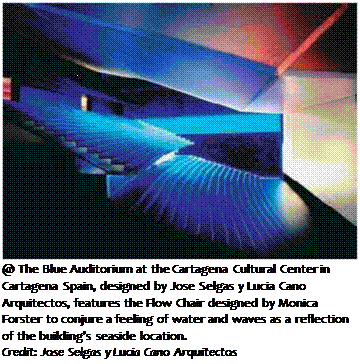 Assuming this was just a tease from a colleague or friend, Forster laughed and forgot about the note. Then, a few months later, she received another email from this mysterious Seglas. This time, it was an electronic holiday card. Forster took a moment to look at the recipient list and noticed her name appeared among those of many other well-known artists and designers. She found herself thinking that perhaps this Seglas was no joke after all. She responded to the first inquiry and discovered it had come from Seglas and Cano Architects, a leading Spanish architectural firm in Madrid, who were developing a major cultural center in Cartagena, Spain and wanted her to design the seats for the auditorium.
Assuming this was just a tease from a colleague or friend, Forster laughed and forgot about the note. Then, a few months later, she received another email from this mysterious Seglas. This time, it was an electronic holiday card. Forster took a moment to look at the recipient list and noticed her name appeared among those of many other well-known artists and designers. She found herself thinking that perhaps this Seglas was no joke after all. She responded to the first inquiry and discovered it had come from Seglas and Cano Architects, a leading Spanish architectural firm in Madrid, who were developing a major cultural center in Cartagena, Spain and wanted her to design the seats for the auditorium.
“They sent me ten different images of the model for the center,” Forster recalls. “It was a very exciting, really a fantastic building that used many different materials and was very modern in its expression.” As if this were not interesting enough, Seglas also told her they wanted her to work with new technologies and materials to create the best auditorium chair ever made. And, she would have the opportunity to work with Poltrona Frau, an Italian company known as one of the premier manufacturers of auditorium chairs in the world.
“Because the building was situated very close to the harbor of Cartagena, I knew I wanted to work with the feeling of water,” Forster says. “I started looking at different ways of doing this and tried to think of how to make a chair, that when they were all closed, would look like waves or a waterfall, with reflections and all the rest.”
The resulting effect is both understated and elegant. “I designed an organic chair, with a quite simple shape,” Forster continues, “that when folded down, the armrest becomes like a wave, and when you close it, the armrest softly bends into the chair, which also means that the chair takes up less space than is typical for this type of chair.”
To further enhance the flowing feeling, Forster was trying to achieve, she suggested working with three slightly different shades of blue. “Each chair is a different color,” she points out, “put together in a pattern that is not random but is organized in a clever way to create shapes with the color so it’s not so clear what the pattern is, but it creates a feeling of movement within the building.” The architects loved this idea, and decided to do one auditorium in red, another in blue, and have the chair bases match the color of the rubber flooring. Forster points out, “The
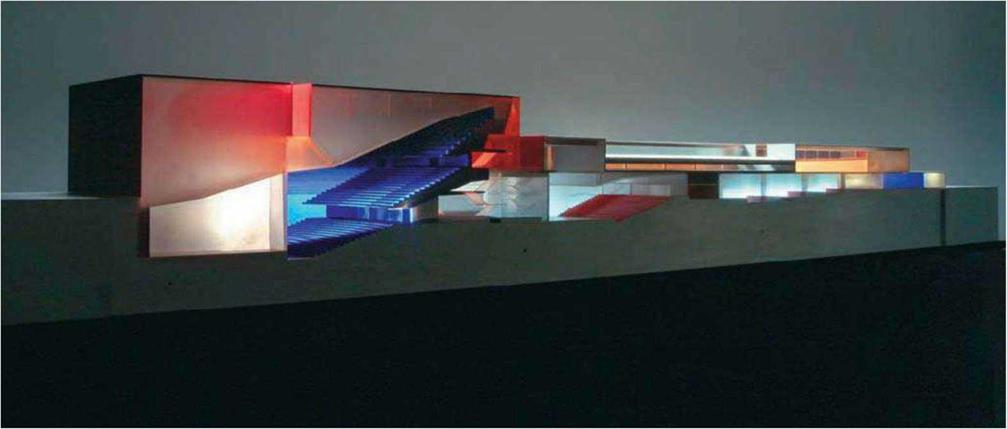
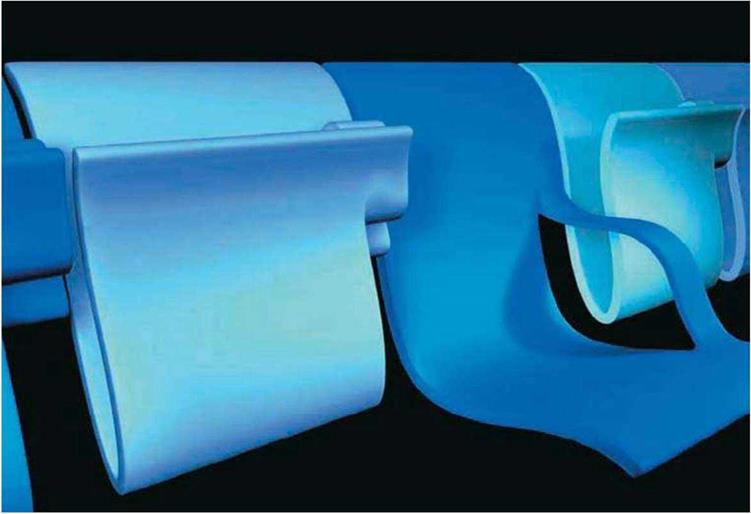
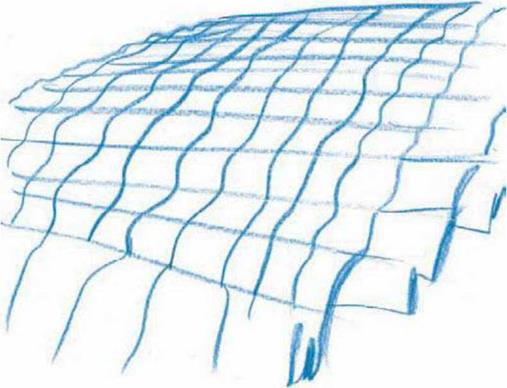
![]() Top: The Cartagena Cultural Center in Cartagena Spain, designed by Jose Selgas у Lucia Cano Arquitectos, makes a modern statement that inspired the simple lines of the Flow chair. Credit: Jose Selgas у Lucia Cano Arquitectos
Top: The Cartagena Cultural Center in Cartagena Spain, designed by Jose Selgas у Lucia Cano Arquitectos, makes a modern statement that inspired the simple lines of the Flow chair. Credit: Jose Selgas у Lucia Cano Arquitectos
© Above: The architects used a mix of materials to create a modern statement that inspired the simple lines of the Flow chair. Credit: Jose Selgas у Lucia Cano Arquitectos
Left: An early sketch illustrates the feeling of flowing water, while only suggesting at the form the Flow auditorium chair would eventually take.
Credit: Monica Forster
idea is that the base of the chair will be the same as the floor, so the base will kind of disappear. It will feel like the chairs are floating. It’s like the chairs will fly.”
Then it came time to see how—and if—these chairs could be produced. Forster describes what happened: “I was working on this idea, and I made a couple of models to take with me and present to the people at the factory. A colleague of mine said that they’d never be able to produce my idea, and forced me to make another solution with an armrest that didn’t fold. The shape was the same, and he said that I’d have to present this other idea when they told me the first one wouldn’t work. So when I showed my model to the fabricators, their foreheads wrinkled up, and it got very quiet for a bit. Then they congratulated me, but said it would be very challenging, which is an Italian way to say that’s it very difficult. You never get ‘it’s not possible,’ with Italian manufacturers; it’s always ‘challenging.’ So we talked about it for a few hours, went out for lunch, and when we came back, they discussed some solutions, and I offered to think about alternatives. I thought maybe now would be the time to show the other model, which I had hidden in a box. They looked at the second version and sighed with relief. I thought that we’d be making this one. But what happened was the next day, Silvano Bonfranceschi, who is head of product development at Poltrona Frau, came back and said that he’d spoken to some folks and decided that they liked the first one better because it’s more interesting—a novelty – more unique. So they thought about different solutions and decided to make the more difficult chair.”
Another aspect to the fabrication challenge was simple durability. As an auditorium chair, it will be used by hundreds of thousands of people, opening, closing, sitting on the armrest, possibly standing on the seats. Ultimately, what Poltrona Frau made is an upholstered chair on a metal frame with injected molded polyurethane foam for cushioning. As far as creating the folding armrest, even Forster isn’t sure how that’s been achieved. “There’s a lot of secret technology in the armrest that I don’t know about,” she says. It has to be soft to fold, and then when it’s out, it needs to be rock hard. It folds like a piece of paper, and that’s the really tricky part.” The single armrest for each chair is made in two modular pieces, but constructed to look perfectly seamless.
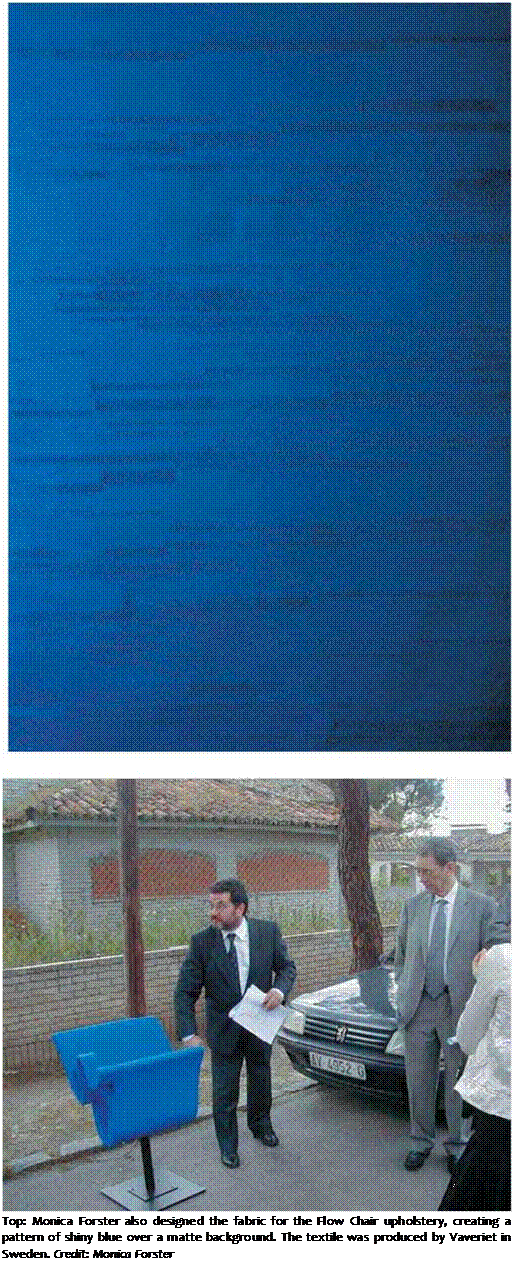 Forster points out that knowing she would be working with such an innovative and experienced manufacturer encouraged her to push the original design. “I have to say,” she says, “that this project would not have been possible with many producers because it is so difficult. Not all of them will have the resources. But I knew Poltrona Frau could take on a challenge like this.” She continues, “In fact, they put so much pride into achieving this design and to overcoming the challenge. They did a great job in developing the chair. It’s so important when things go into production to not let go of the original idea and to keep the poetry within the object or piece of furniture.”
Forster points out that knowing she would be working with such an innovative and experienced manufacturer encouraged her to push the original design. “I have to say,” she says, “that this project would not have been possible with many producers because it is so difficult. Not all of them will have the resources. But I knew Poltrona Frau could take on a challenge like this.” She continues, “In fact, they put so much pride into achieving this design and to overcoming the challenge. They did a great job in developing the chair. It’s so important when things go into production to not let go of the original idea and to keep the poetry within the object or piece of furniture.”
![]() Above: An early prototype of a single Flow Chair shows the folded armrest, which is made in two pieces, but looks like only one. Silvano Bonfransceschi, head of product development, at manufacturer Poltrona Frau, stands next to the chair. The final product has a base that matches the floor so the auditorium appears to be made of chairs that float. Credit: Monica Forster
Above: An early prototype of a single Flow Chair shows the folded armrest, which is made in two pieces, but looks like only one. Silvano Bonfransceschi, head of product development, at manufacturer Poltrona Frau, stands next to the chair. The final product has a base that matches the floor so the auditorium appears to be made of chairs that float. Credit: Monica Forster
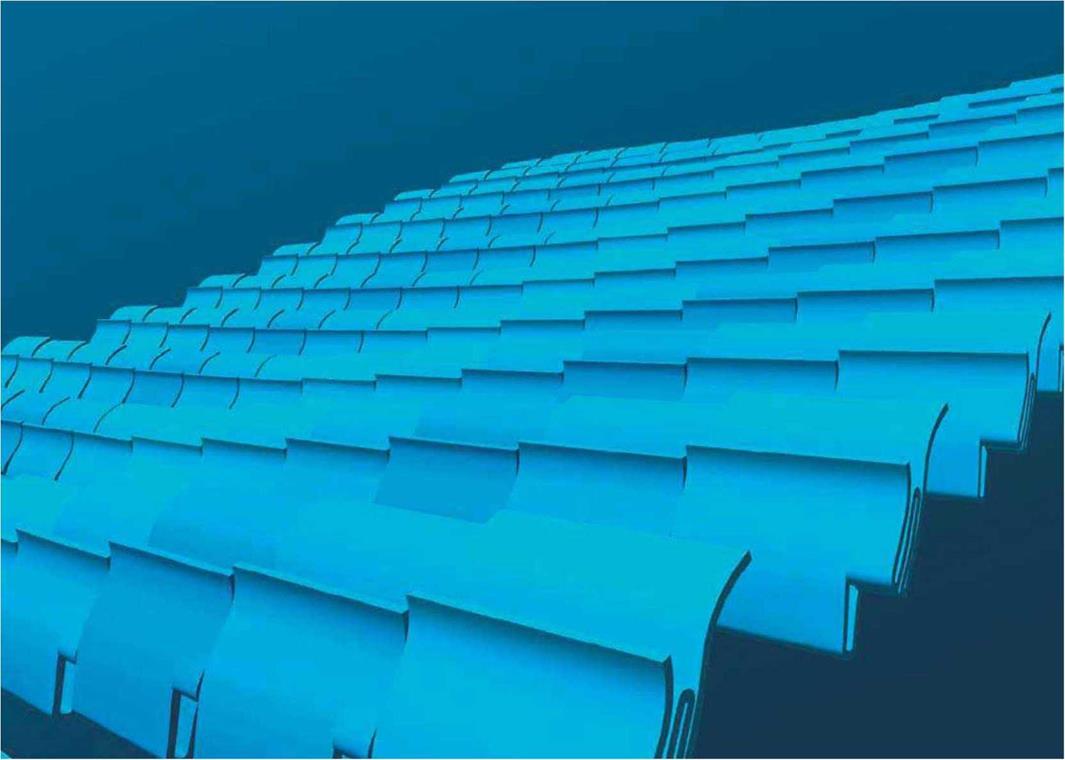
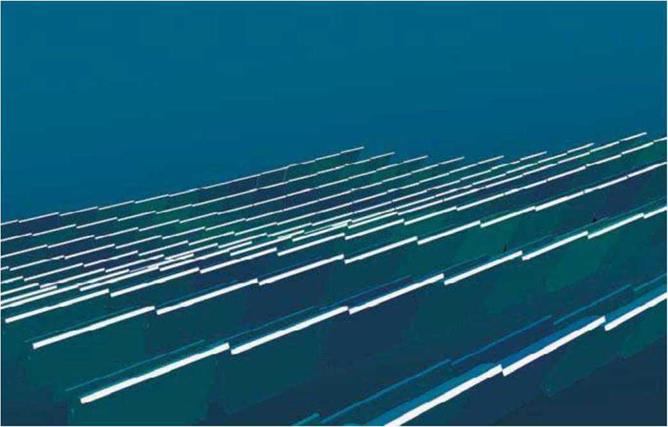 (Л) The Flow Chair is not a single object, but an entire auditorium of chairs upholstered in shades of blue that have been arranged in a subtle pattern to suggest undulating waves of water.
(Л) The Flow Chair is not a single object, but an entire auditorium of chairs upholstered in shades of blue that have been arranged in a subtle pattern to suggest undulating waves of water.
Credit: Monica Forster Design Studio
© In another version, Forster suggestsed the Flow Chairs be given the additional benefit of lights in the back to indicate which seats are unoccupied. The manufacturer is currently looking into the feasibility of producing this option. Credit: Monica Forster Design Studio



